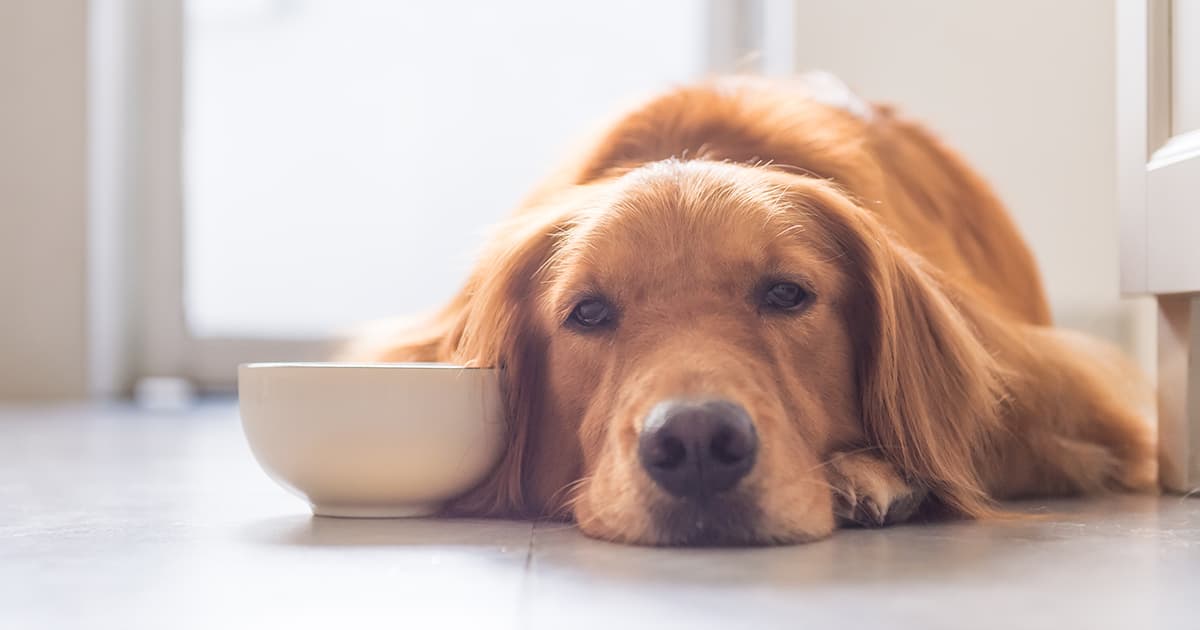Why Is My Dog Bringing Up Undigested Food?

If the food or water that went into your dog’s mouth has suddenly come back out again, the last thing you probably want to do when you’re cleaning up is carefully inspect it. But it’s important to look at what your dog just expelled to see if it was vomitus or regurgitated material. They have different causes, and the potential diagnosis depends on whether your dog vomited or regurgitated.
Vomiting vs. Regurgitation
So what’s the difference? Vomiting is the forceful ejection of stomach contents and is usually associated with those familiar sounds of heaving and retching before it happens. Regurgitation is the passive emptying of food or fluid from the esophagus (the muscular tube that connects the mouth and stomach) with little or no warning. There’s no retching or abdominal movement with regurgitation, and it typically happens shortly after eating or drinking. Vomit can be different colors, consistency and quantity, but regurgitated material is usually undigested food with possibly some slimy mucus.
Why Do Dogs Regurgitate?
Sometimes the answer is as simple as your dog gulped their water too fast or scarfed down their food too quickly. And sometimes the answer isn’t as simple. If your dog regurgitates often, it’s a good idea to have them checked by your veterinarian. Frequent regurgitation could cause aspiration pneumonia, which occurs when regurgitated fluid and food is inhaled into their lungs.
Some dogs have congenital issues with their throat or esophagus, which means they were born with the problem. For others, there could be underlying medical conditions causing the regurgitation that need to be addressed. These may include heartburn, a foreign body stuck in their throat or esophagus, an esophageal disease, or megaesophagus.
What Is Megaesophagus?
Regurgitation is a common symptom for dogs with megaesophagus — a condition where the esophagus muscles become weak and lose their ability to move food to the stomach. The esophagus also becomes larger, allowing food and water to stay in the esophagus longer. If swallowed food, water and saliva don’t enter the stomach, they may be regurgitated. There’s no cure for megaesophagus in most cases, but changes to your dog’s feeding habits may help reduce regurgitation episodes.
Diagnosing and Treating Regurgitation Issues
Your veterinarian will perform a physical exam and take down notes on your dog’s history to determine if the problem is regurgitation or vomiting. That’s why it’s important to look at the material your dog brings up. Your veterinarian may also perform an X-ray or other diagnostic imaging to view the upper gastrointestinal tract of your dog to see if there are any obstruction or esophageal issues causing the regurgitation. Treatment for regurgitation depends on the diagnosis but may include medication and trying new diets, food consistencies and meal frequency. There are also special feeding chairs available that help elevate food and water bowls and keep your dog upright after eating.
The occasional episode of regurgitation or vomiting is probably not too concerning. But if your dog is frequently regurgitating or vomiting, let your veterinarian know.
RELATED POST: When Should You Worry About Your Vomiting Dog?
